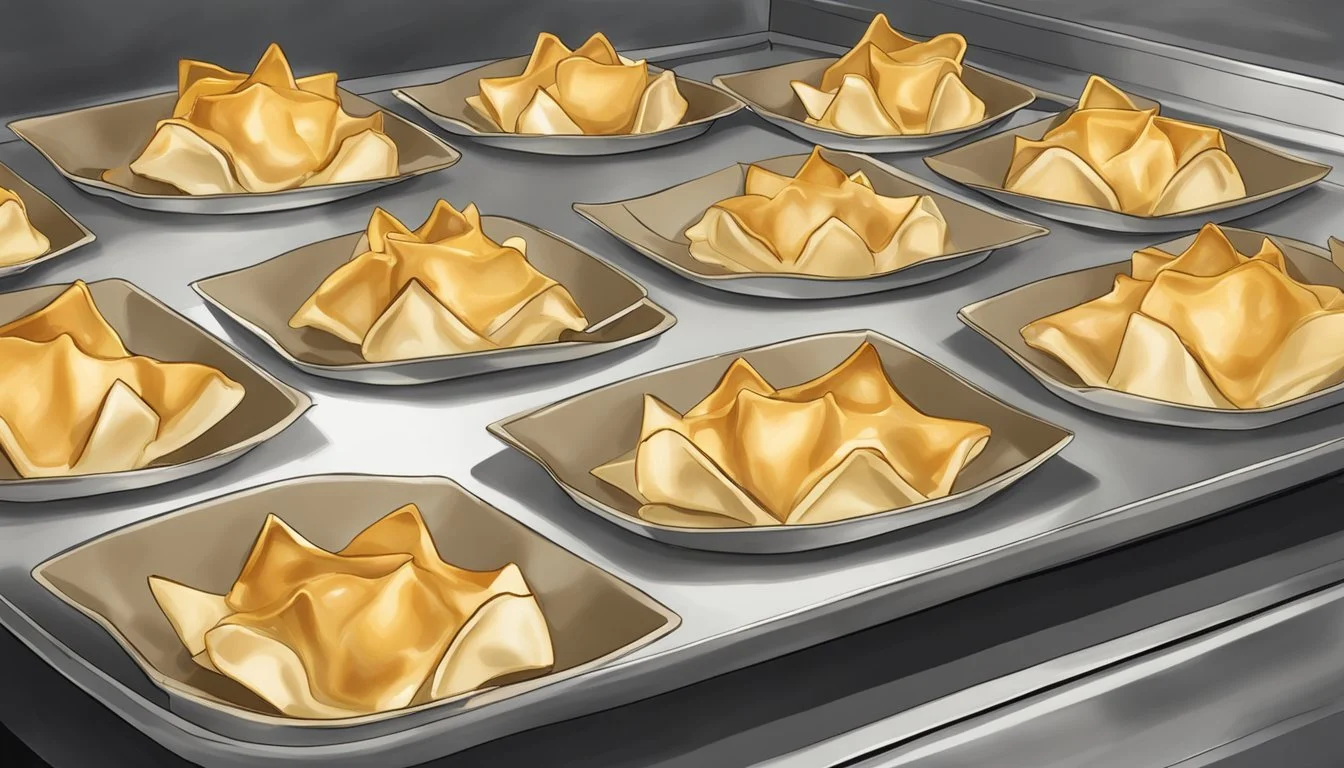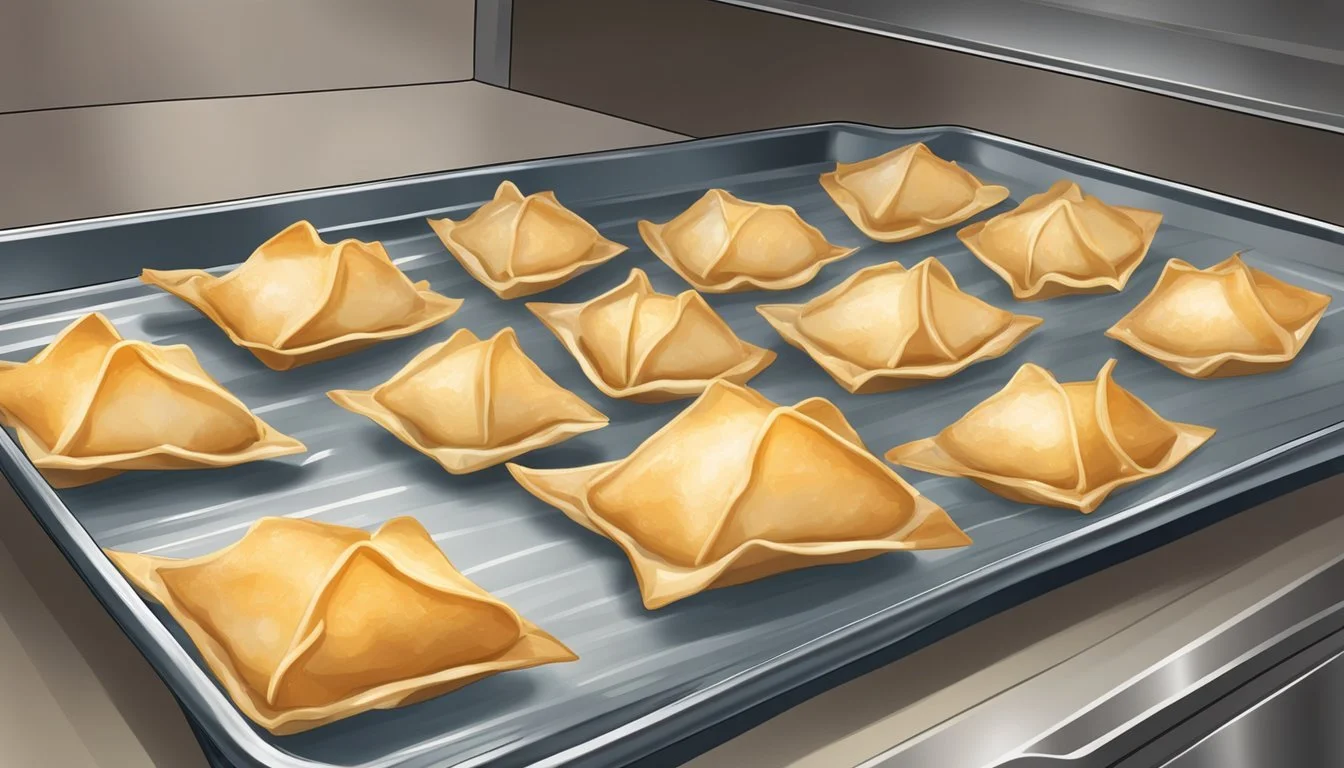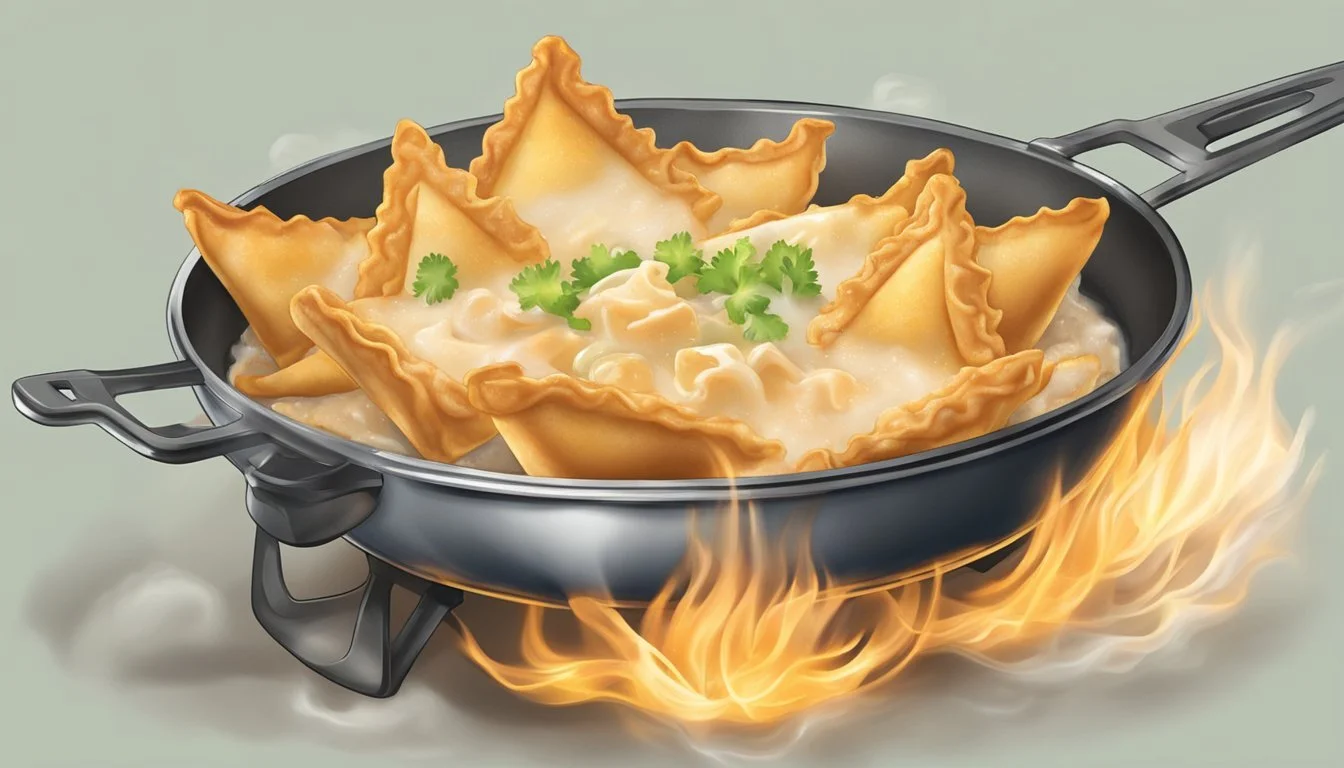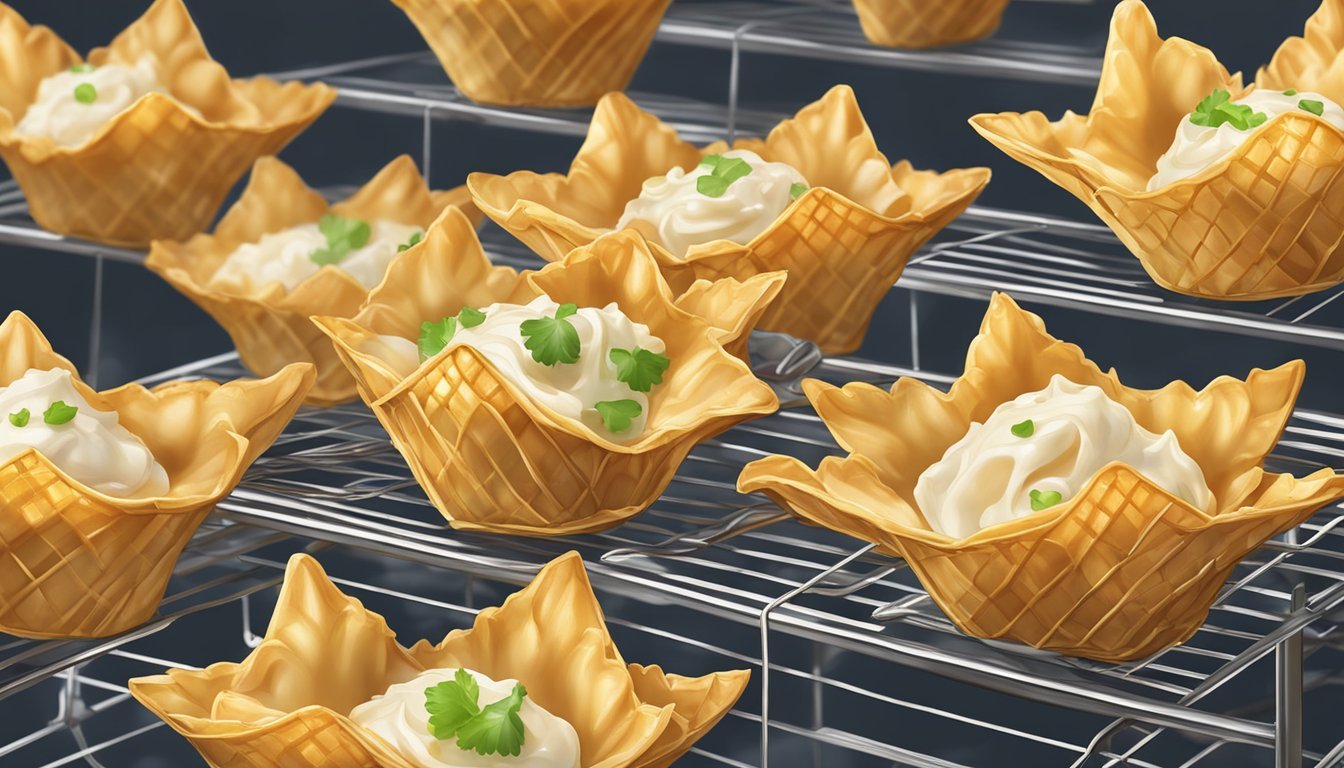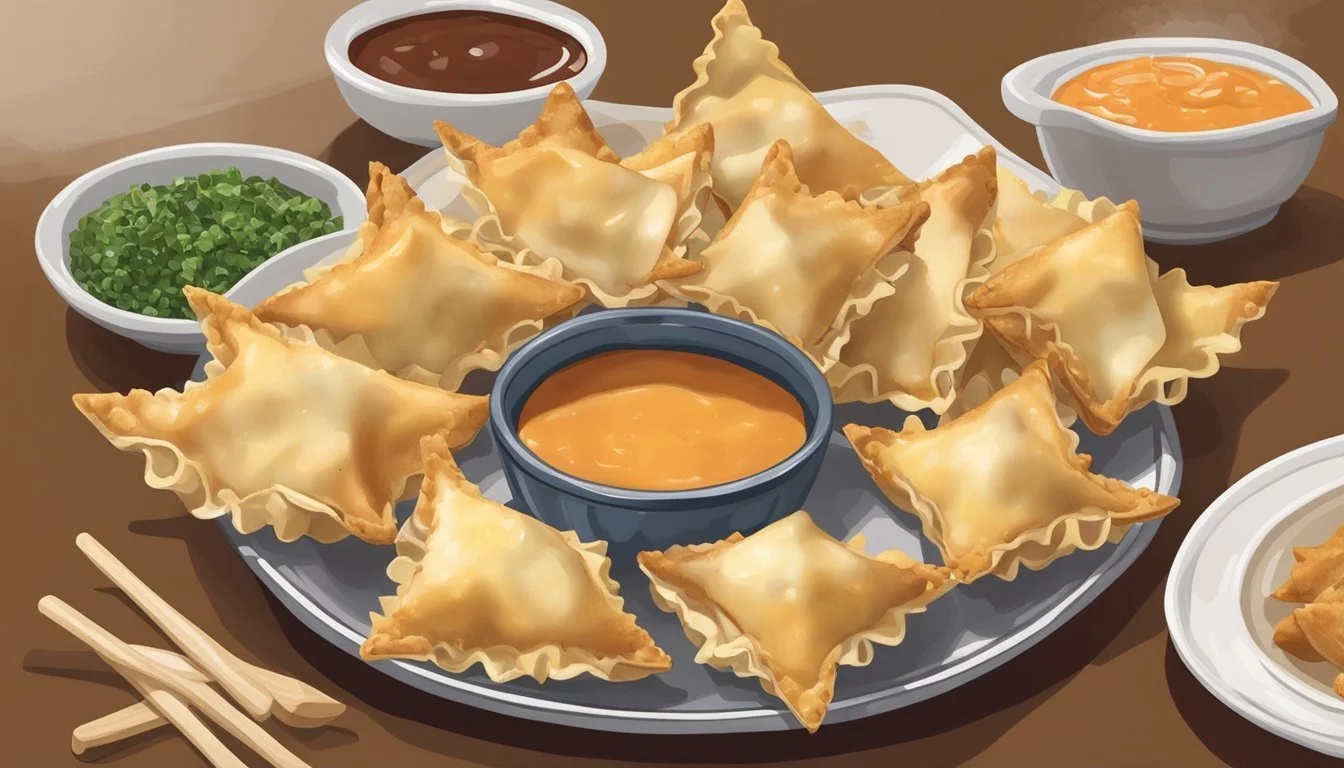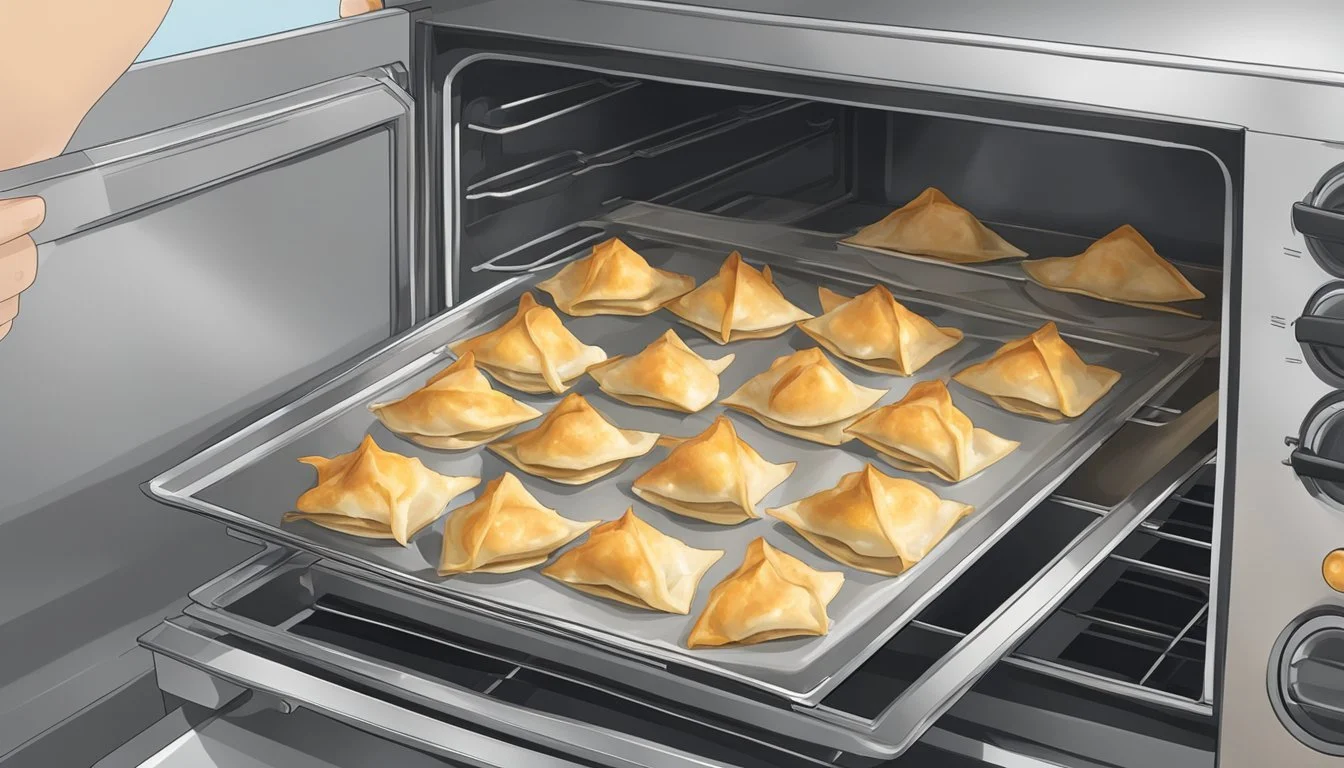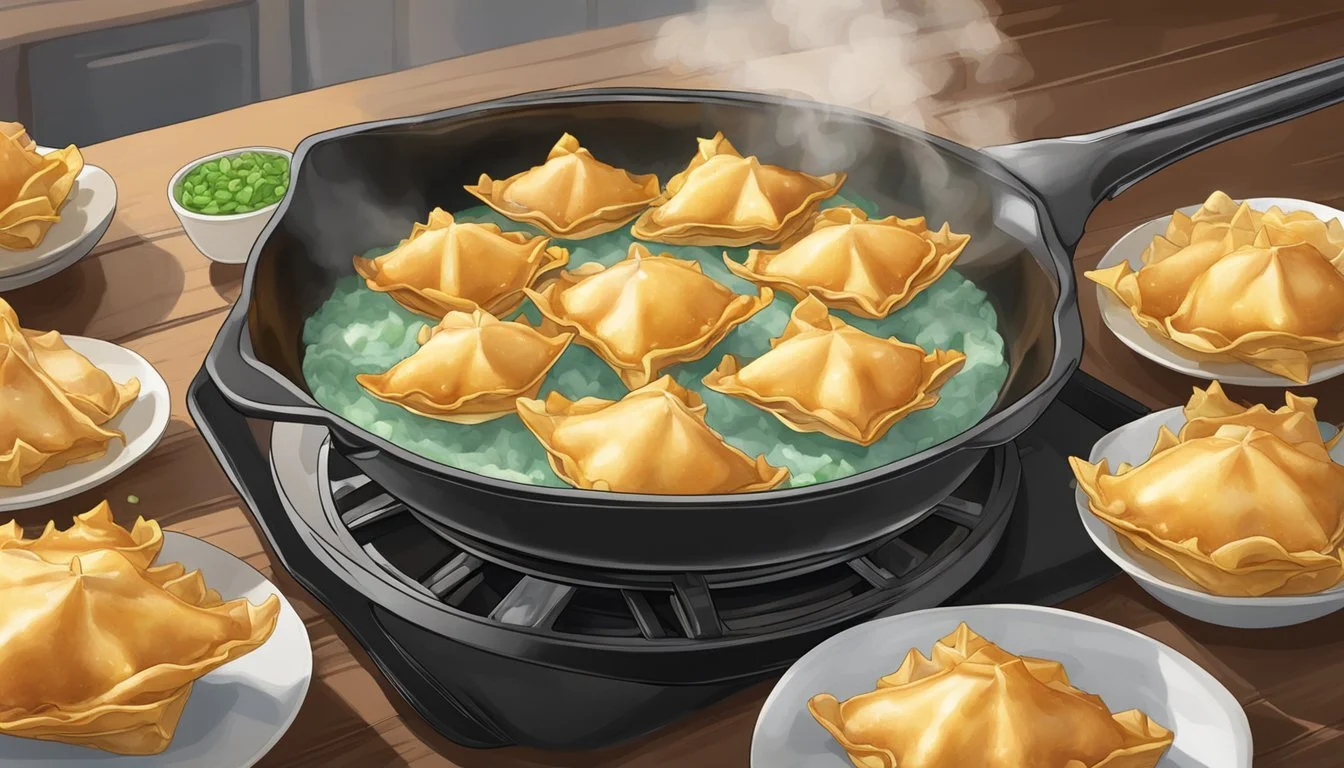Best Way to Reheat Crab Rangoon
Ensuring a Creamy Filling and Crispy Wrapper
Crab (What wine goes well with crab?) Rangoon, with its creamy filling encased in a crispy wonton wrapper, is a popular appetizer that many enjoy both in restaurants and at home. Meanwhile, one might encounter the common issue of maintaining the delectable texture of this dish when reheating leftovers. The key lies in using a method that reheats the filling without compromising the crispness of the outer shell.
The ideal approach to reheat Crab Rangoon involves creating the right environment to ensure the filling becomes creamy without the wrapper losing its crunch. Techniques vary from using a microwave with precautions to prevent drying, employing an oven to achieve an even warmth, or an air fryer that circulates hot air to replicate the freshly-fried texture. Each method has its advantages and specific steps to follow for best results.
Understanding Crab Rangoon
Crab Rangoon consists of a delicate mixture of crab, either genuine or imitation crab meat, and cream cheese encased within crispy wonton wrappers. This appetizer is a staple in American Chinese restaurants and is praised for its creamy interior and crunchy exterior.
Composition of Crab Rangoon:
Wrapper: A thin wonton dough that crisps when fried.
Filling: A creamy, savory blend often containing:
Crab meat or imitation crab
Cream cheese
Green onions for flavor
Spices and seasonings
Typically served with a dipping sauce, such as sweet and sour or soy-based sauces, crab rangoon offers a popular balance of savory and slightly sweet flavors. The origin of crab rangoon is not traditionally Chinese, but it has been embraced by the American palate and has become a fusion dish reflecting a combination of culinary influences.
Cooking Techniques:
Fried: Most commonly, crab rangoon is deep-fried until the wonton wrapper reaches a golden-brown color, ensuring a crispy texture.
Baking: An alternative to frying, this method can result in a slightly healthier option without sacrificing too much on texture.
Crab Rangoons and Seafood:
While the dish can be made with authentic crab meat, it is often prepared with imitation crab, a seafood product made from fish, due to cost and accessibility. Both versions offer a similar flavor profile and can be equally enjoyed in the final dish.
Storage Tips for Crab Rangoon
Proper storage methods are essential to maintain the quality of Crab Rangoon. Employing the right techniques before refrigeration and during freezing can significantly extend their shelf life while preserving flavor and texture.
Before Refrigeration
One should place leftover Crab Rangoon in an airtight container before storing them in the refrigerator. This method prevents the wrappers from becoming soggy and the filling from losing its creamy consistency. They can be stored like this in the refrigerator for 2-3 days.
Do:
Cool the Crab Rangoon to room temperature.
Store in a single layer to prevent sticking.
Don't:
Leave Crab Rangoon at room temperature for longer than 2 hours.
Stack Crab Rangoon without a barrier, as they may stick together and tear when separated.
Freezing and Defrosting
For longer storage, one can freeze Crab Rangoon. To freeze, place the cooled Rangoon in a single layer on a baking sheet and freeze until solid. Once frozen, transfer them to a freezer bag, pressing out as much air as possible before sealing to reduce freezer burn. Frozen Crab Rangoon will maintain quality for up to 3 months. When ready to eat, they can generally be reheated directly from frozen, or for best results, defrosted in the refrigerator overnight before reheating.
Freezing Instructions:
Step 1: Arrange in a single layer and freeze.
Step 2: Transfer to a freezer bag and label with the date.
Defrosting Instructions:
Option 1: Reheat directly from frozen.
Option 2: Thaw overnight in the refrigerator.
Pre-Reheating Preparation
Before reheating Crab Rangoon, one should ensure they prepare them adequately to maintain the creamy texture of the filling and the crispness of the wonton wrapper. Failure to do so can lead to a soggy or dry outcome.
Bringing to Room Temperature:
If the Crab Rangoon is frozen, one should ideally defrost them by leaving them out until they reach room temperature. This helps to even out the temperature throughout, preventing a cold center.
Foil for Protection:
When using an oven to reheat, lightly covering the Crab Rangoon with foil helps protect the wonton wrappers from burning or drying out. The foil should be removed near the end of reheating for the wraps to regain their crisp texture.
Moisture Retention:
To retain the moisture inside the Crab Rangoon, particularly when using a microwave:
Place a damp paper towel over them, or
Cover the dish with a microwave-safe lid.
These methods create a humid environment, which assists in keeping the wonton wrapper from becoming too dry while allowing the filling to stay creamy.
Thawing and Drying:
It's crucial to pat the Crab Rangoon dry if there's any excess moisture from defrosting to ensure they crisp up properly during reheating.
By properly preparing Crab Rangoon before reheating, one can achieve the optimal balance of a crispy wrapper and a creamy filling, delivering an experience close to the original serving.
Reheating Techniques
Choosing the right reheating method is essential to enjoy leftover crab rangoon with a creamy filling and a crisp wrapper. The techniques below cater to different equipment and time constraints.
Oven Method
Reheating crab rangoon in the oven preserves the crispiness of the wonton wrapper while ensuring the filling remains creamy. Preheat the oven to 375°F (190°C) for a conventional oven or 370°F for a fan-assisted one. Arrange the crab rangoons on a baking tray lined with parchment paper or a wire rack to allow even heat distribution. For added moisture, cover with foil and reheat for 5-7 minutes. Remove the foil and bake for an additional 2-3 minutes to crisp the wrapper.
Equipment: Oven, baking tray, parchment paper/wire rack, aluminum foil
Steps:
Preheat the oven.
Place crab rangoon on the tray/rack.
Cover with foil and heat.
Uncover and bake for crispiness.
Stovetop Method
Using a skillet on a stovetop allows for a quick and controlled reheating process. Heat a pan over medium heat and add a small amount of oil if necessary to prevent sticking. Using tongs, place the crab rangoons in the pan, turning occasionally until they are evenly warmed and the exterior regains its crispness.
Equipment: Skillet, tongs, optional oil
Steps:
Warm the skillet over medium heat.
Add crab rangoon.
Turn until evenly reheated and crispy.
Air Fryer Method
For those seeking a healthier alternative that doesn't compromise on texture, the air fryer is an excellent choice. Preheat the air fryer to 350°F (180°C). Place the crab rangoons in the air fryer basket in a single layer to ensure the hot air circulates effectively. Heat for 3-4 minutes, checking for crispiness.
Equipment: Air fryer, air fryer basket
Steps:
Preheat the air fryer.
Arrange crab rangoon in the basket.
Air fry until heated through.
Microwave Method
If time is of the essence, the microwave offers the fastest means of reheating. Although this method may not provide a crispy wrapper, it will reheat the filling adequately. Place the crab rangoons on a microwave-safe plate and cover with a damp paper towel to create steam. Heat in 30-second intervals until hot, usually for about 1 minute.
Equipment: Microwave, microwave-safe plate, paper towel
Steps:
Arrange crab rangoon on a plate.
Cover with a damp paper towel.
Microwave in intervals until hot.
Achieving the Best Results
When reheating crab rangoon, the goal is to maintain the crispy wrapper while ensuring the filling remains creamy. The method chosen is critical in accomplishing this balance.
Crispiness Factors
For a crispy texture, hot air circulation is vital. An oven or air fryer can provide even heating necessary to achieve a golden brown and flaky exterior. Here are specific steps and tips:
Oven Method:
Preheat the oven to 375°F (190°C).
Place crab rangoon on a baking tray.
Cover with foil for initial heating to avoid direct heat and sogginess.
Remove foil and bake for a few more minutes for that crispy texture.
Air Fryer Method:
Preheat to 350°F (180°C).
Lightly brush rangoon with olive oil for a golden brown result.
Arrange in a single layer inside the basket to ensure proper air circulation.
Shake the basket or flip the rangoons halfway through cooking for even heating.
Creaminess Concerns
The filling should remain tangy and creamy, which requires careful control of heat to avoid drying out or separating. These tactics help safeguard the filling's texture and flavor:
Moist Heat:
When using a microwave, cover the rangoons with a damp paper towel to introduce moisture into the environment.
Use short intervals at high power and check periodically to prevent overheating.
Temperature Control:
Preheat the cooking device to prevent sudden heat shock.
Monitor temperatures closely using a thermometer for precision and control.
Avoiding overcooking is key as it can cause the filling to become too soggy or the wrapper too crispy.
Serving and Sauce Pairings
When serving crab rangoon, ideal sauce pairings can significantly enhance the overall dining experience. Below are the top recommended sauces for complementing this popular American Chinese appetizer.
Sweet and Sour Sauce: A classic choice, sweet and sour sauce offers a delightful balance of sweetness and tanginess that complements the creamy filling of crab rangoon.
Soy Sauce: For those preferring a more savory taste, soy sauce provides a rich umami flavor that can accentuate the delicate taste of crab.
Sweet Chili Sauce: This sauce features a sweet profile with a hint of heat, making it a perfect accompaniment for those who enjoy a spicy edge with their appetizers (What wine goes well with appetizers?).
Pairing Table
Sauce Type Flavor Profile Recommended For Sweet and Sour Sauce Sweet and tangy Balancing creaminess with acidity Soy Sauce Savory and deep umami Enhancing delicate crab flavor Sweet Chili Sauce Sweet with a spicy kick Adding a spicy contrast
For presentation, crab rangoon should be served soon after reheating to ensure that the wrapper remains crispy. Arrange them on a platter with the chosen dipping sauce(s) in separate small bowls for individual preference. When enjoying crab rangoon, it is essential to allow them to cool slightly before dipping to avoid the risk of the sauces overwhelming the subtle flavors of the appetizer.
Garnishing with a sprinkle of chopped chives or sesame seeds can add both visual appeal and subtle texture, further elevating the dish. Selecting the right sauce and presenting the crab rangoon with care is key to an enjoyable appetizer experience.
Safety and Consumption
When reheating leftover crab rangoons, safety is paramount to prevent foodborne illness. Following USDA guidelines ensures that reheated leftovers not only taste good but are also safe to consume.
Refrigeration: Leftovers should be stored in the refrigerator within two hours of cooking to minimize the risk of bacteria growth. Leftover crab rangoons should be kept at or below 40°F.
Shelf Life: Refrigerated leftovers should be consumed within 3 to 4 days, which is the optimal timeframe for both safety and quality. Any items beyond this period should be discarded.
Reheating:
Internal Temperature: For safety, any leftover crab rangoons should be reheated to an internal temperature of 165°F before consumption.
Storage Material:
Tin Foil: Wrapping crab rangoons in foil can help preserve their moisture during refrigeration and it's also useful when reheating in the oven.
The guidelines apply specifically to leftover crab rangoons that have been cooked, served, and then stored as leftovers. They may not apply to commercially packaged rangoons that come with their own storage and reheating instructions. Always use clean utensils and surfaces when handling leftovers to prevent cross-contamination. Consume reheated leftovers promptly and do not reheat more than once, as this can increase the risk of foodborne illnesses.
Troubleshooting Common Issues
In reheating Crab Rangoon, the challenge often lies in retaining a crispy wrapper while keeping the filling creamy. Addressing common issues such as sogginess, overcrowding, and uneven heating is key to maintaining the desired texture and taste.
Preventing Sogginess
To avoid a soggy exterior, they should not wrap Crab Rangoon in a wet paper towel when reheating. Instead, place the Rangoon on a wire rack in the oven or air fryer basket to allow heat to circulate. Additionally, using a piece of foil can help protect it from direct heat and control moisture retention for a more crispy texture.
Oven: Use a preheated oven and a piece of lightly tented foil.
Air Fryer: Maintain a small gap between each piece to allow airflow.
Avoiding Overcrowding
Overcrowding can lead to steam build-up and uneven cooking, resulting in a less crispy outcome. When reheating, it is essential to place Crab Rangoon in a single layer with space between each piece, whether using an oven or air fryer.
Single Layer Importance: Each piece receives direct heat exposure.
Space Between: Ensures heat circulates for an evenly crispy texture.
Ensuring Even Heating
Even heating helps achieve a uniformly crispy wrapper without overcooking the filling. Use moderate and controlled temperatures with considered timing and turn the Rangoon halfway through reheating.
Controlled Temperature: Set the oven or air fryer to a medium level.
Timing: Monitor closely to avoid overheating, which can dry out the filling.
By attending to these issues, one can effectively reheat Crab Rangoon while preserving its quality.
Final Thoughts
When reheating crab rangoon, the goal is to maintain the integrity of the filling while ensuring the wrapper regains its crispness. Oven reheating emerges as a strong contender, striking a balance between preserving the creaminess of the filling and achieving a crispy exterior. It's important to preheat the oven and cover the crab rangoons to prevent drying.
In contrast, the microwave is a quick method but often results in a soggy wrapper. For those seeking convenience and speed, it may be a suitable option, albeit with a compromise on texture.
Air fryers have gained popularity for their ability to produce a crispy texture similar to frying. By using an air fryer, one might find the best of both worlds—a creamy filling encased in a crispy wrapper.
The stovetop method, involving a skillet and a small amount of oil, can mimic the freshness of newly cooked crab rangoon. Care must be exercised to prevent burning, but this method can deliver excellent flavor retention.
Here are key takeaways for reheating crab rangoon:
Oven Reheating:
Preheat to 375°F (190°C)
Cover with foil; reheat 5-7 minutes
Uncover and heat for additional minutes for crispiness
Microwave:
Cover with a damp towel
Short intervals on high (30-second bursts)
Air Fryer:
Best for achieving a fried-like crispy texture
Stovetop:
Medium heat with oil
Constant attention to avoid burning
Each method has its pros and cons, but the optimal choice typically balances time, convenience, and desired texture. Reheaters must also consider personal taste preferences and the particular characteristics of their kitchen appliances.

